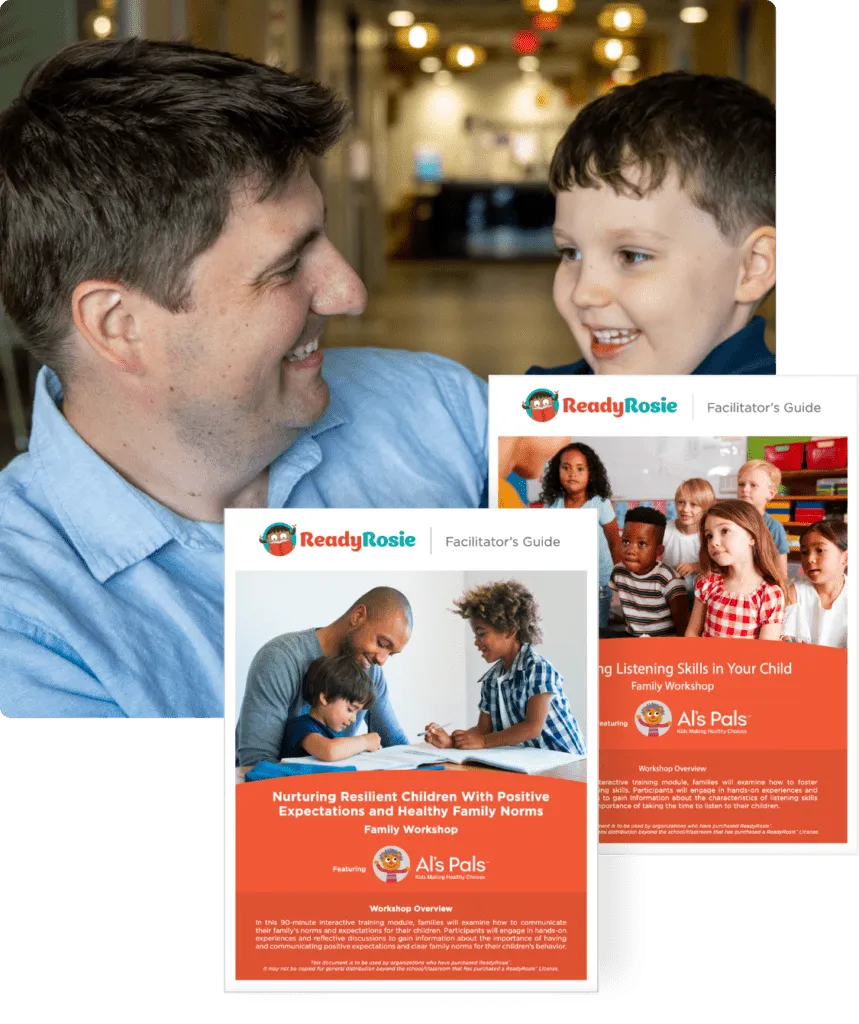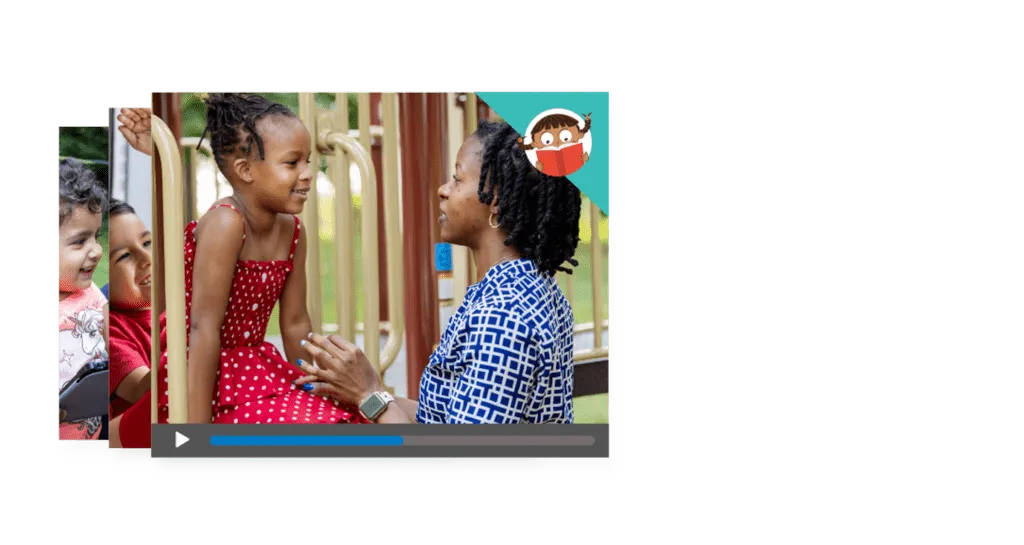Did you know that ReadyRosie qualifies for ESSA & ESSER funding? View ESSA & ESSER Resources

Research-based, Evidence-Informed Family Engagement
ReadyRosie is a family engagement and early learning resource that has been shown to have positive impacts on family behaviors and child outcomes. ReadyRosie was designed to help teachers strengthen the connections between school and home with high- quality, equitable resources. ReadyRosie provides
- over 1,500 mobile-friendly videos that show real families modeling fun activities that support classroom learning in authentic ways;
- over 80 research and answer videos that provide bite-sized learning from the leading voices in education
- ready-made, interactive family workshops and resources; and
- powerful and timely professional development
Deepen and Scale Family Engagement
Measure impact with qualitative and quantitative data
Customize content for families, track progress, and assess data to measure impact. Families can comment on shared content and provide powerful insights about their children and their family goals. Administrators can track program-level and individual user data by engagement tied to learning and family outcomes.

Create collaborative and goal-oriented family partnerships with ready-made educator resources
Ready-made educator resources include facilitator guides to conduct interactive family workshops in English and Spanish, parent-teacher conference resources, and more. Build strong and reciprocal relationships, create intentional connections between school and home, and promote family bonding.

Build educator capacity to drive meaningful relationships with families
Give educators the tools, knowledge, and confidence they need to strengthen the family–school partnership, implement ReadyRosie to fidelity, and ultimately improve child outcomes with virtual, in-person, or online professional development offerings.

Strengthen the Connections Between School and Home
Better serve all families with evidence-informed and research-based family engagement
ReadyRosie, an evidence-informed, research-based family engagement resource and parenting curriculum that is uniquely content-driven and informed by seven essentials for transformative family partnerships, has been shown to have positive impacts on family behaviors and child outcomes.
Authentically model family and child interactions through videos in English and Spanish
Support families with mobile-friendly ReadyRosie Modeled Moments videos, which are filmed in English and Spanish, aligned with Intentional Teaching Experiences and objectives for development and learning, and show real families modeling fun activities that support classroom learning in authentic ways.
Boost confidence with bite-sized learning from the leading voices in education
Our Research and Answers videos are made in partnership with experts in the field to provide educators and families with information on the topics they care about most, such as social-emotional learning, discipline, screen time, and healthy communication, in an accessible format.

Strengthen the Connections Between School and Home
Build meaningful partnerships with families to improve child outcomes and overcome barriers so that every child in your program benefits.
ReadyRosie is so different because it models for the parent how to foster learning for their child, and they feel empowered. They are their child’s first and best lifelong teacher. When they gain those skills and knowledge about how to support their child’s learning, development, and school readiness, you see them stand a little taller because they are the ones that actually helped their child.
Martha Strickland, State Director, 4K Program,
South Carolina First Steps to School Readiness
Columbia, South Carolina
More Reasons to Love ReadyRosie
Aligned to Your Early Learning Standards
Aligned to early learning guidelines in each state, the Teaching Strategies objectives for development and learning, and The Creative Curriculum so you can demonstrate that your program is meeting all requirements while focusing on the needs of individual children.
Aligned to Head Start ELOF & Meets Parenting Curriculum Requirements
Aligned to the Head Start Early Learning Outcomes Framework and the Parent, Family, and Community Engagement Framework so you can demonstrate that your Head Start program is meeting all requirements
Meets Title 1 Recommendations for Family Engagement
ReadyRosie is a birth through elementary cohesive family engagement resource that facilitates family partnerships for powerful student outcomes for schools receiving Title I funds.
Qualify for ESSER Funding
ReadyRosie can be purchased with funds from the Elementary and Secondary School Emergency Relief Fund (ESSER Fund), established as part of the Education Stabilization Fund in The Coronavirus Aid, Relief, and Economic Security Act (CARES Act).







